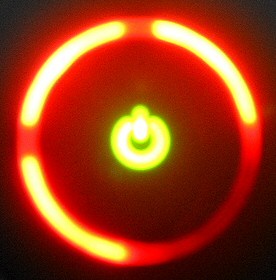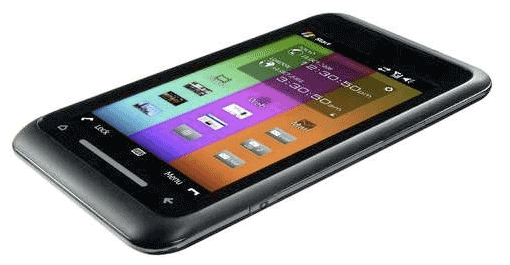 Microsoft’s press conference at Mobile World Congress turned out to feature a bunch of stuff that had already been subject to previews, rumors, and/or leaks: Windows Mobile 6.5, the “My Phone” wireless backup/sync service, and an app store known as the Marketplace.
Microsoft’s press conference at Mobile World Congress turned out to feature a bunch of stuff that had already been subject to previews, rumors, and/or leaks: Windows Mobile 6.5, the “My Phone” wireless backup/sync service, and an app store known as the Marketplace.
The company is also announcing that it wants people to call the phones that run its operating system just “Windows Phones,” rather than Windows Mobile ones, even though the OS is still known as Windows Mobile–continuing a long and proud legacy of confusing terminology and pointless name changes for Microsoft mobile products (anyone but me remember oddities such as “Palm-Size PCs“?).
It’s obvious to all that Microsoft lags so far behind Apple when it comes to next-generation phone OSes that it’s not even a race yet; it’s not yet even at the point where what it’s playing is catchup, and it’s going to take awhile to get there. And Windows Mobile 6.5 is, as the name suggests, a half-step towards a competitive modern smartphone OS, and it isn’t shipping until later this year. That said, it doesn’t look bad when judged solely as an upgrade to today’s Windows Mobile. It’s less of a shameless copy of the iPhone than most of what I’ve seen at the show so far, I like the revised home screen (with direct links to appointments, voicemail messages, etc.), and the new Internet Explorer looks like it gives Windows Mobile its first default browser that isn’t pretty darn dreadful. (And Microsoft bragged today that the new IE supports Flash, although I wonder if they meant the dumbed-down version known as Flash Lite–their demo involved a mundane rotating series of photos rather than video or interactivity.)
Windows 6.5’s interface is a somewhat uneasy blend of old-style Windows Mobile elements and more streamlined, touch-driven elements (although it won’t support multi-touch). Microsoft’s marketing message for the OS rests in large part on the notion that you want the familiarity of Windows on a phone, but Windows Mobile is now in an odd no-man’s-land in which it retains some Windows interface aspects that never works very well on a phone (like a menu bar full of tiny icons), but mixes them with stuff that has nothing to do with desktop Windows, thereby making the OS less than utterly familiar.
(Side note: When Apple brought OS X to the iPhone, it redid the interface from scratch to make sense on a tiny screen, and it doesn’t particularly play up the phone operating system’s kinship with its desktop brethren. It’s the opposite of Microsoft’s strategy, and it seems to work…)
I also wonder whether hardware manufacturers are growing impatient with the state of Windows Mobile: The press conference included guest appearances by representatives of LG and HTC who waxed enthusiastic about version 6.5, but both companies also unveiled phones today that place their own touch-centric interfaces on top of Windows Mobile 6.5 (LG’s GM730 and HTC’s Touch Diamond2 and Touch Pro2).
Microsoft briefly showed My Phone–which looks more backup-centric than Apple’s Mobile Me, with the ability to schedule regular backups to take place wirelessly at odd hours when you’re not using your phone–and didn’t have much to say about the Marketplace store other than that they’re announcing it.
The tone of this afternoon’s press conference was humble, and, at the end, a tad defensive–Steve Ballmer concluded by saying that he hoped anyone who questioned Microsoft’s commitment to mobile products was less “confused” after seeing the new offerings. I can’t see the company not making operating systems for phones–long term, it’s a more important business than OSes for traditional PCs–but it’s still not the least bit clear how it’s going to truly get back in the game.
After the jump, Technologizer’s exclusive fuzzy photos of Ballmer and some Windows Mobile 6.5 interface highlights…
Continue Reading →
 Are the Xbox 360-killing problems that cause the infamous Red Ring of Death gone? And will people who send in their consoles for repairs have to cycle through the process multiple times to get a real fix?
Are the Xbox 360-killing problems that cause the infamous Red Ring of Death gone? And will people who send in their consoles for repairs have to cycle through the process multiple times to get a real fix?

 According to
According to  Mel got his way, and kept EchoStar at bay (that unintentionally rhymed). Liberty Media, which owns and operates DirecTV, will invest $530 million in the troubled company in the form of several loans, including $250 million right away. That up front payment will help Sirius XM to pay off the $171.6 million of debt due today.
Mel got his way, and kept EchoStar at bay (that unintentionally rhymed). Liberty Media, which owns and operates DirecTV, will invest $530 million in the troubled company in the form of several loans, including $250 million right away. That up front payment will help Sirius XM to pay off the $171.6 million of debt due today. Except for phones, pretty quiet:
Except for phones, pretty quiet: I didn’t mention
I didn’t mention 
 Phones. More phones. Phones that look a lot like iPhones, except for the ones that don’t. Phones that may never show up in the good old US of A. Phones that are full of style, and ones that seem to be devoid of discernible personality. That, in short, was my Monday at
Phones. More phones. Phones that look a lot like iPhones, except for the ones that don’t. Phones that may never show up in the good old US of A. Phones that are full of style, and ones that seem to be devoid of discernible personality. That, in short, was my Monday at  The massive multiplayer music game
The massive multiplayer music game  Microsoft’s press conference at Mobile World Congress turned out to feature a bunch of stuff that had already been subject to previews, rumors, and/or leaks:
Microsoft’s press conference at Mobile World Congress turned out to feature a bunch of stuff that had already been subject to previews, rumors, and/or leaks: